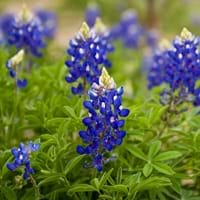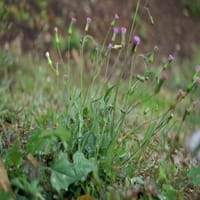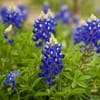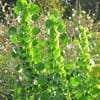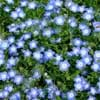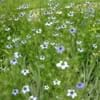Type
Flowering Plants
Flowering Plants
Origin
Texas
Eastern Africa, Middle Africa, Southern Asia
Types
Ornamental Plant
Not Available
Number of Varieties
Not Available
Habitat
Roadsides, Sandy areas
Cultivated Beds
USDA Hardiness Zone
3-8
8-11
AHS Heat Zone
9 - 1
8 - 1
Sunset Zone
1a, 1b, 2a, 2b, 3a, 3b, 4, 5, 6, 7, 8, 9, 10, 11, 12, 13, 14, 15, 16, 17, 18, 19, 20, 21, 22, 23, 24
Not Available
Habit
Clump-Forming
Upright/Erect
Flower Color
White, Blue, Purple
Pink, Lavender, Violet
Flower Color Modifier
Bicolor
Bicolor
Fruit Color
Not Available
White, Brown
Leaf Color in Spring
Green, Sea Green
Green, Dark Green
Leaf Color in Summer
Green, Sea Green
Dark Green
Leaf Color in Fall
Not Available
Dark Green
Leaf Color in Winter
Light Green
Light Green
Leaf Shape
Palmate
Lyrate-pinnatilobed
Plant Season
Spring
Summer
Sunlight
Full Sun, Partial Sun
Full Sun, Partial Sun
Type of Soil
Loam, Sand
Clay, Loam
The pH of Soil
Neutral, Alkaline
Acidic, Neutral, Alkaline
Soil Drainage
Well drained
Well drained
Bloom Time
Early Spring, Spring, Late Spring
Early Summer, Summer, Late Summer
Tolerances
Drought
Drought
Where to Plant?
Bedding, Container, Ground
Container, Ground, Pot
How to Plant?
Cuttings, Seedlings
Seedlings
Plant Maintenance
Medium
Medium
Watering Requirements
Medium
Average Water Needs
In Summer
Lots of watering
Lots of watering
In Spring
Moderate
Moderate
In Winter
Average Water
Average Water
Soil pH
Neutral
Acidic, Alkaline, Neutral
Soil Type
Loamy, Sandy
Clay, Loamy, Sandy
Soil Drainage Capacity
Well drained
Well drained
Sun Exposure
Full Sun
Full Sun, Partial Sun
Pruning
Remove damaged leaves, Remove dead branches, Remove dead leaves
Remove damaged leaves, Remove dead branches, Remove dead leaves
Fertilizers
All-Purpose Liquid Fertilizer
Self-fertile
Pests and Diseases
Red blotch
Ascochyta blight, Bacterial Blight, Powdery mildew
Plant Tolerance
Drought
Drought
Flower Petal Number
Single
Single
Foliage Texture
Medium
Coarse
Foliage Sheen
Matte
Matte
Attracts
Butterflies
Butterflies
Allergy
Not Available
no allergic reactions
Aesthetic Uses
Showy Purposes
Showy Purposes
Beauty Benefits
Not Available
Not Available
Environmental Uses
Air purification
Air purification
Medicinal Uses
Not Available
Astringent, Depurative, Diaphoretic, Diuretic, Expectorant, Febrifuge, Odontalgic, Ophthalmic
Part of Plant Used
Flowers, Leaves, Seeds
Flowers, Leaves, Shoots
Other Uses
Animal Feed, Culinary use, Showy Purposes
Used as a vegetable
Used As Indoor Plant
Yes
No
Used As Outdoor Plant
Yes
Yes
Garden Design
Bedding Plant, Hanging Basket
Mixed Border
Botanical Name
LUPINUS subcarnosus
EMILIA sonchifolia
Common Name
Bluebonnet, Texas Bluebonnet
Consumption Weed, Lilac Tasselflower, Shaving Brush
In Hindi
texas bluebonnet
Shaving Brush
In German
texas Blaue Lupine
Rasierpinsel
In French
texas bluebonnet
Blaireau
In Spanish
texas Bluebonnet
Brocha de afeitar
In Greek
texas bluebonnet
Βούρτσα ξυρίσματος
In Portuguese
texas bluebonnet
Pincel de barba
In Polish
texas bluebonnet
Pędzel do golenia
In Latin
Texas lory
Tondenti Peniculus
Phylum
Magnoliophyta
Magnoliophyta
Class
Magnoliopsida
Magnoliopsida
Family
Fabaceae
Asteraceae
Clade
Angiosperms, Eudicots, Rosids
Angiosperms, Asterids, Eudicots
Tribe
Genisteae
Senecioneae
Subfamily
Faboideae
Asteroideae
Number of Species
Not Available
Not Available
Properties of Texas Bluebonnet and Shaving Brush
Wondering what are the properties of Texas Bluebonnet and Shaving Brush? We provide you with everything About Texas Bluebonnet and Shaving Brush. Texas Bluebonnet doesn't have thorns and Shaving Brush doesn't have thorns. Also Texas Bluebonnet does not have fragrant flowers. Texas Bluebonnet has allergic reactions like Not Available and Shaving Brush has allergic reactions like Not Available. Compare all the properties and characteristics of these two plants. Find out which of these plant can be used as indoor plant. If you are interested to decorate your house and garden, find out aesthetic uses, compare them and select the plant which will beautify your surrounding. Along with beautification, try comparing medicinal and edible uses of Texas Bluebonnet and Shaving Brush and you can choose the plant having best and most benefits.
Season and Care of Texas Bluebonnet and Shaving Brush
Season and care of Texas Bluebonnet and Shaving Brush is important to know. While considering everything about Texas Bluebonnet and Shaving Brush Care, growing season is an essential factor. Texas Bluebonnet season is Spring and Shaving Brush season is Spring. The type of soil for Texas Bluebonnet is Loam, Sand and for Shaving Brush is Clay, Loam while the PH of soil for Texas Bluebonnet is Neutral, Alkaline and for Shaving Brush is Acidic, Neutral, Alkaline.
Texas Bluebonnet and Shaving Brush Physical Information
Texas Bluebonnet and Shaving Brush physical information is very important for comparison. Texas Bluebonnet height is 25.40 cm and width 20.30 cm whereas Shaving Brush height is 45.70 cm and width 30.50 cm. The color specification of Texas Bluebonnet and Shaving Brush are as follows:
Texas Bluebonnet flower color: White, Blue and Purple
Texas Bluebonnet leaf color: Green and Sea Green
Shaving Brush flower color: Pink, Lavender and Violet
- Shaving Brush leaf color: Green and Dark Green
Care of Texas Bluebonnet and Shaving Brush
Care of Texas Bluebonnet and Shaving Brush include pruning, fertilizers, watering etc. Texas Bluebonnet pruning is done Remove damaged leaves, Remove dead branches and Remove dead leaves and Shaving Brush pruning is done Remove damaged leaves, Remove dead branches and Remove dead leaves. In summer Texas Bluebonnet needs Lots of watering and in winter, it needs Average Water. Whereas, in summer Shaving Brush needs Lots of watering and in winter, it needs Average Water.
